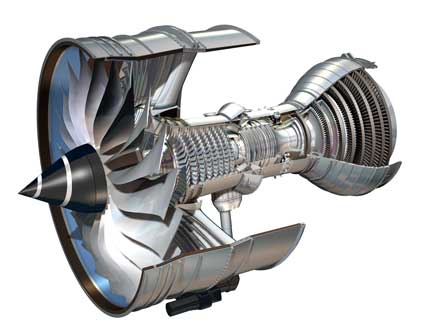By Andrew Doyle in Derby
High fuel costs could prompt Rolls-Royce to offer a three-shaft turbofan to power the new-generation, 150-seat narrowbody airliner families that Airbus and Boeing are widely expected to introduce in the second half of the next decade.
“Our view is that we’d probably do a three-shaft engine, if the fuel burn becomes a higher criterion than unit cost,” says R-R director of engineering and technology Colin Smith. “It’s a more complex engine, but it can provide better thermal efficiency,” he adds.
 |
|---|
| R-R's engine for future narrowbodies could use Trent three-shaft architecture |
To justify a solution drawing on the UK manufacturer’s unique three-shaft architecture employed in its large-fan engines, the thrust requirement for the new airliner families – baselined on 150-seaters – would need to be at the “bigger end” of expectations, says Smith.
Derby, UK-based R-R introduced the three-shaft RB211 widebody powerplant – which incorporates intermediate compressor and turbine stages – in the 1970s and retained the same architecture for its current family of Trent turbofans. The RB211-535 was also offered for the now defunct Boeing 757 narrowbody, and is an option for the Tupolev Tu-204. Rival engines supplied by General Electric and Pratt & Whitney are two-shaft designs.
Current 737s are powered exclusively by GE-Snecma joint venture CFM International’s two-shaft CFM56, while A320-family aircraft are available with CFM56s or International Aero Engines two-shaft V2500s produced by a consortium of Japanese Aero Engines, MTU, P&W and R-R. GE has said its new-generation narrowbody engine offering will be provided through CFMI. P&W aims to deliver a “step change in propulsion efficiency” by developing a geared turbofan, which Smith describes as a “two-and-a-half shaft” engine.
R-R has designated its Berlin-based subsidiary R-R Deutschland as its “centre of excellence” for two-shaft engines and last week completed the transfer of its share of V2500 assembly to Germany from Derby.
■ R-R has signed a five-year deal with Japan’s National Institute for Materials Science (NIMS) to fund research into high-temperature superalloys for gas turbine engines. “NIMS has an impressive record in developing high-class single-crystal superalloys...and we look forward to working with them on sixth-generation nickel-based alloys, and in investigating radically new alloys that may offer the potential for step-change temperature capability,” says R-R director of research and technology Ric Parker.
Source: Flight International
















